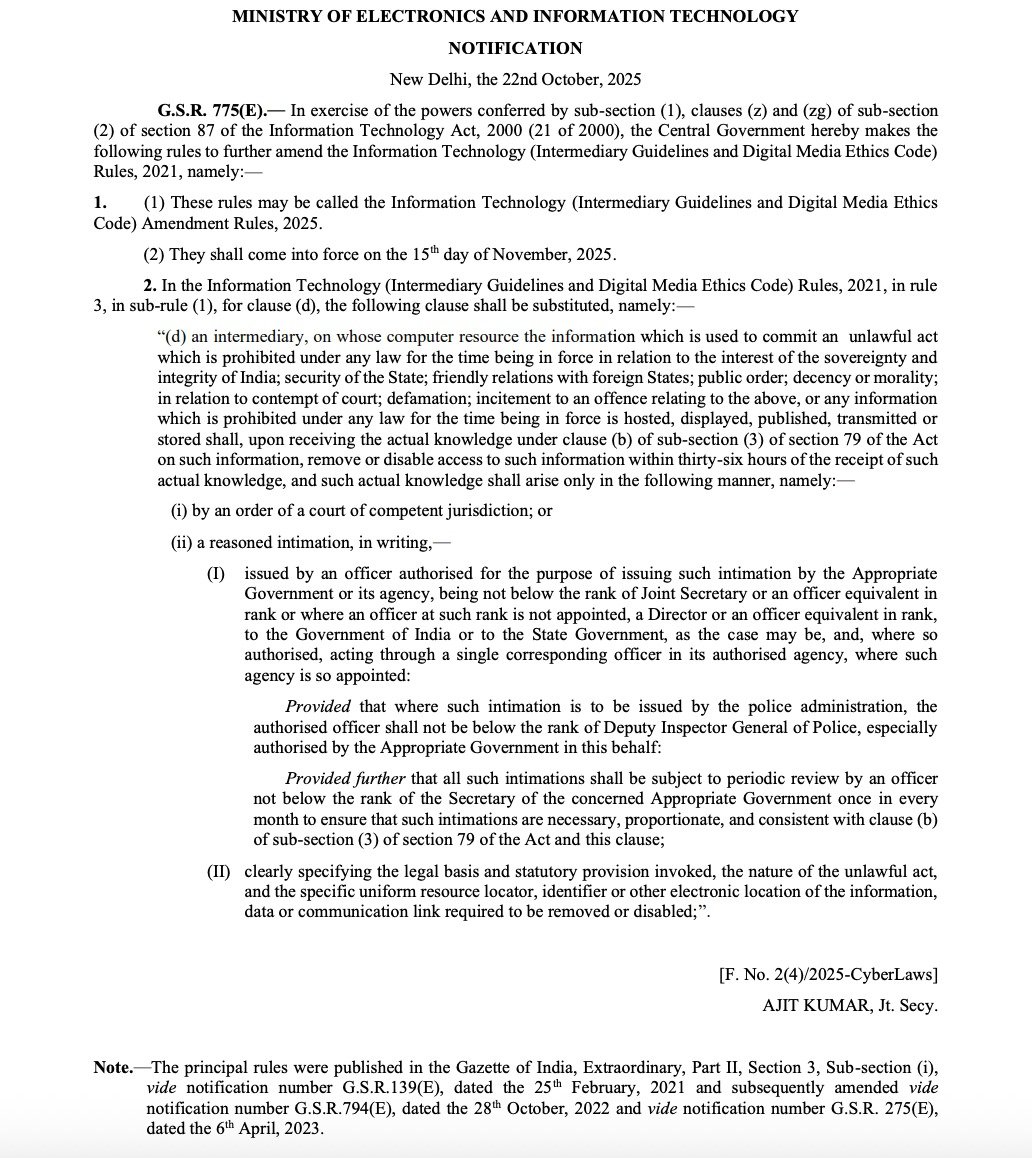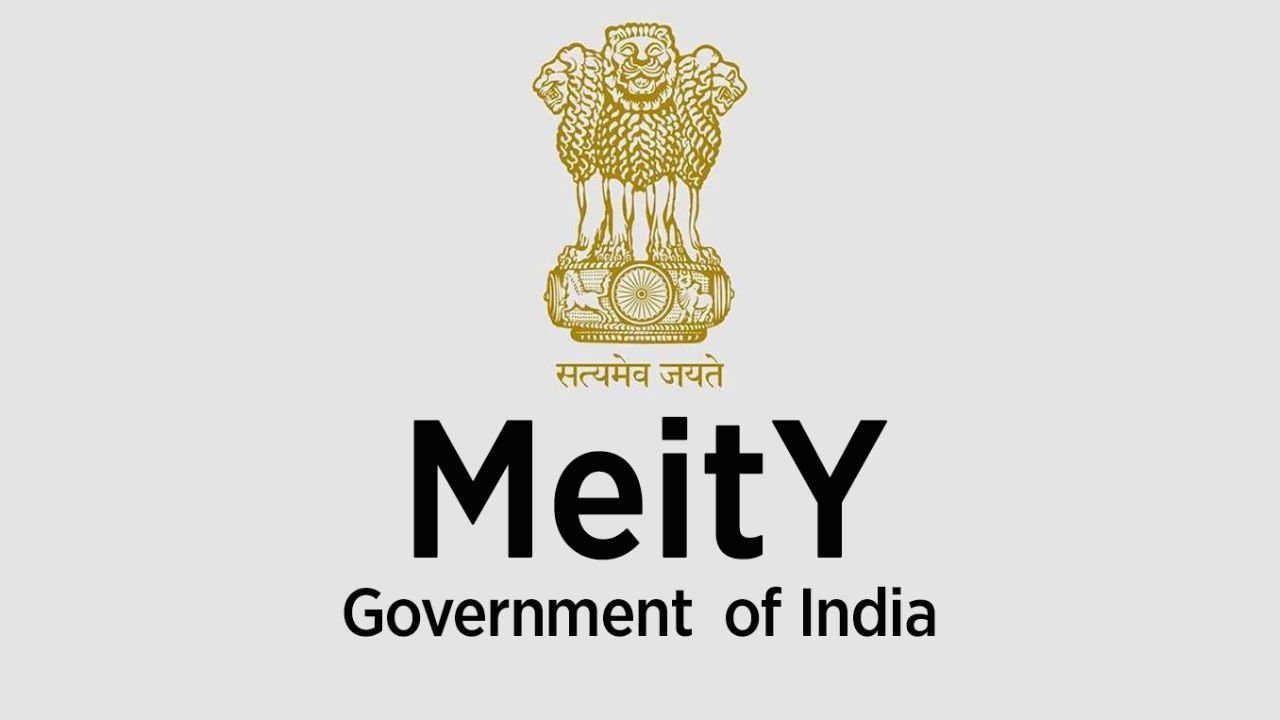The Government of India has tightened regulations on online content moderation under Section 79(3)(b) of the Information Technology Act, limiting the authority to send take down notices to senior officials. The Ministry of Electronics and Information Technology (MeitY) announced on October 22, 2025, that effective November 15, 2025, only officers at the rank of Joint Secretary or above, or in law enforcement, Deputy Inspector General of Police (DIG) or above, will have the power to issue such notices to social media platforms.
This move aims to enhance accountability, transparency, and legal compliance in India’s digital ecosystem. Previously, junior officers, including police Sub Inspectors and Assistant Sub Inspectors, could also issue take down orders, raising concerns about inconsistent application and potential misuse.
FCRF Launches CCLP Program to Train India’s Next Generation of Cyber Law Practitioners
Key Amendments
The amendments have been introduced through Rule 3(1)(d) of the Information Technology Rules, 2021, and include:
- Senior officers (Joint Secretary or above) are now the only authorities permitted to issue take down notices.
- Law enforcement take down orders can only be issued by officers at DIG rank or higher.
- In departments where a Joint Secretary is not appointed, Directors or officers of equivalent rank may act as the authorising agency.
- Proposed amendments also address emerging challenges, including deepfakes and manipulated media content.
Minister of Electronics and IT Ashwini Vaishnaw said,
“By elevating the level of authority, we have strengthened government accountability and ensured that take down notices are issued with proper legal oversight.”

Legal Basis and Compliance
The new rules require that every take down notice must clearly specify:
- The legal provision invoked.
- The nature of the unlawful act.
- The specific URL, identifier, or electronic location of the content in question.
Failure to comply with these notices may result in the social media platform losing safe harbour protection under the IT Act, which otherwise shields intermediaries from liability for third-party content. This change ensures that take down notices are legally justified and transparent, reinforcing trust between platforms, users, and the government.
Oversight and Review
A periodic review mechanism has been introduced, presided over by officers not below the rank of Secretary (e.g., Home Secretary or IT Secretary at the state level). This monthly review will ensure that all take down notices are legally sound, rational, and proportionate, preventing misuse or arbitrary orders.
This oversight framework provides both platforms and citizens with greater transparency and confidence in India’s online content regulation framework.
Background and Rationale
The move comes amid legal challenges from platforms such as X (formerly Twitter), which argued in courts that Section 79(3)(b) previously allowed any officer to send take down notices, creating ambiguity and potential inconsistencies in enforcement.
By restricting authority to senior officials, the government intends to maintain legal consistency, accountability, and a balance between digital freedom and regulation.
Digital Freedom and Governance
Experts note that these amendments are a critical step toward balancing government oversight and platform autonomy in India’s fast-growing digital landscape. In an era of rapid information dissemination on social media, it is essential that take down orders are legally robust, transparent, and accountable.
The rules provide platforms with clear guidance on when and how content may be removed, while simultaneously safeguarding citizens’ rights to free expression.
Effective November 15, 2025, only senior officials will have the authority to issue take down notices under Section 79(3)(b) of the IT Act. Each notice will undergo monthly review by a Secretary-level officer, ensuring transparency, legality, and proportionality in enforcement.


